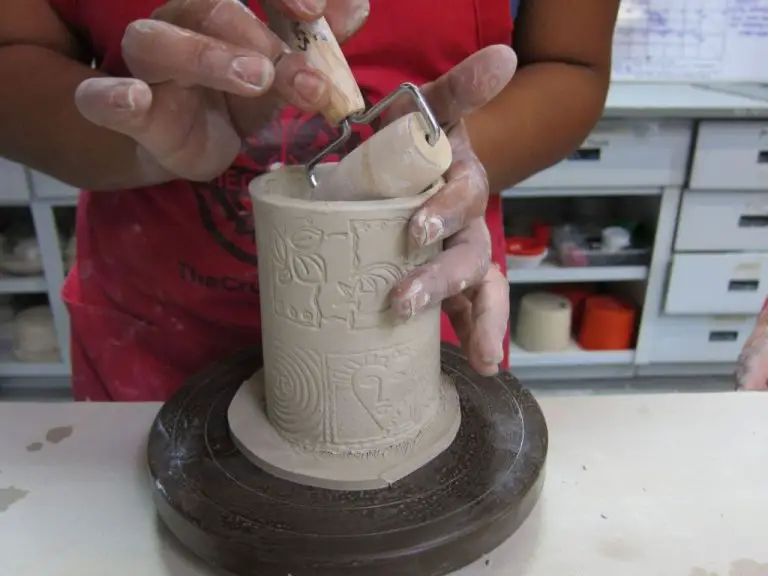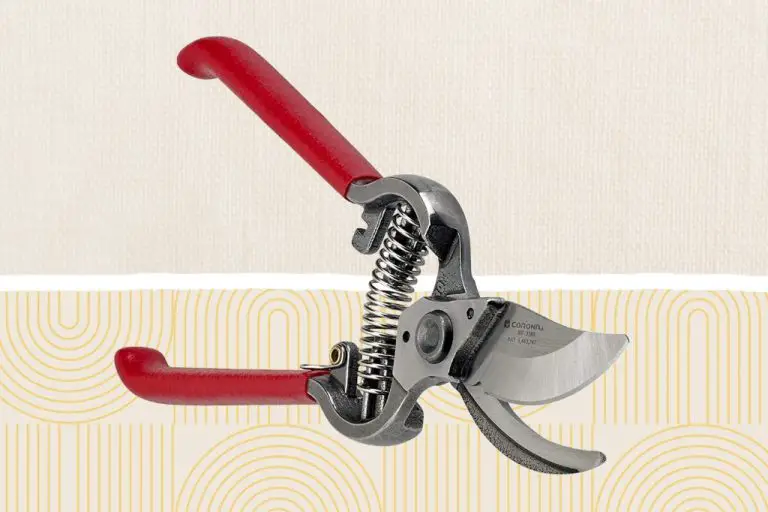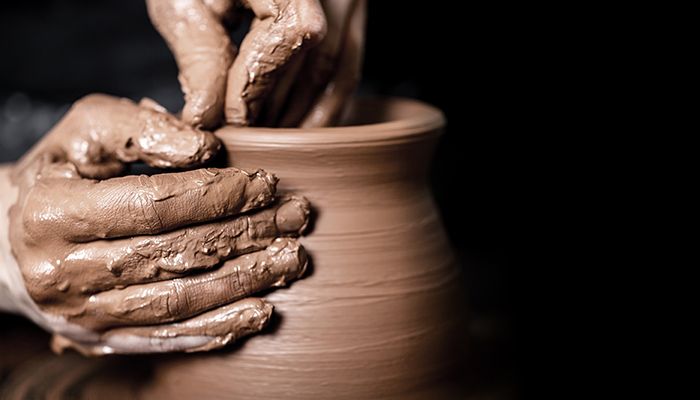Does Cold Porcelain Clay Crack?
What is Cold Porcelain Clay?
Cold porcelain clay is a non-toxic, lightweight modeling material that air-dries to a durable, bisque-like finish. It originated in South America centuries ago as a homemade clay alternative using corn starch, white glue and baby oil. The exact ingredients and recipe were refined over time, eventually leading to the modern cold porcelain clay used by crafters and artists today.
Unlike natural clays that require firing in a kiln, cold porcelain clay fully cures through air-drying. The finished product has a matte, porcelain-like look and feel without the need for high heat. It’s an extremely versatile material that can be shaped, sculpted, molded and carved just like polymer clay, but with some key differences:
- Cold porcelain is lighter and more delicate than polymer clay.
- It air-dries in 24-48 hours vs baking polymer clay.
- The texture is smooth like porcelain rather than plastic.
- Details are finer and crisper.
- It bonds to itself extremely well for seamless sculpting.
Cold porcelain continues to grow in popularity for hobbyists and crafters who want an accessible, non-toxic clay that doesn’t require a kiln.
Composition of Cold Porcelain
Cold porcelain clay is made from just a few simple ingredients that, when combined together, create a lightweight, non-toxic air-drying clay. The main ingredients in cold porcelain clay are:
- Glue – This acts as the binder to hold the ingredients together. White craft glue or wood glue are commonly used.
- Cornstarch – This makes the clay smooth, flexible and gives it a matte finish when dry. Cornstarch is a key ingredient in cold porcelain.
- Baby powder or talc – This is added to prevent stickiness and absorb excess moisture.
- Liquid (water or lemon juice) – A small amount of liquid activates the glue and brings the ingredients together into a clay consistency.
The glue binds the cornstarch particles together while absorbing the moisture to create a smooth, clay-like dough. The baby powder helps absorb excess moisture and prevents stickiness. Changing the ratios of the ingredients allows adjusting the clay from stiff to soft as needed for different projects.
Why Cold Porcelain Doesn’t Crack
One of the main reasons cold porcelain clay doesn’t crack is because it doesn’t require baking. Air dry clays that need to be baked, like polymer clay or oven-bake clay, can crack because of shrinkage that occurs during the baking process. When the clay particles are heated, they move closer together, causing the clay to reduce in size. This shrinkage creates stress which can result in cracking and breakage.
Cold porcelain clay contains glue, which gives it flexibility even when completely dry. The glue acts as a binding agent that adds stretchiness and bend to the material. So when cold porcelain air dries, it retains some malleability and elasticity. This flexibility helps prevent cracking from stresses as the clay dries.
Additionally, cold porcelain can be repeatedly conditioned with water which reintroduces moisture into the material. This allows the clay to be softened again to its original state and helps relieve any drying stresses that may build up. So if any tiny cracks do form, they can often be smoothed away by working a small amount of water back into the cold porcelain.
Curing and Drying Cold Porcelain
Proper curing and drying is key to preventing cracks in cold porcelain clay. Unlike other clays, cold porcelain clay is air dried rather than baked in a kiln. The air drying process allows the water in the clay to evaporate slowly, which minimizes stress on the clay that can lead to cracking and breakage.
Ideal conditions for air drying cold porcelain clay include room temperature between 70-80°F and 40-60% humidity. Avoid extreme temperatures or humidity levels, as too much heat or dryness will cause the clay to dry too quickly. Placing the clay in a room with air conditioning or a dehumidifier helps maintain favorable drying conditions.
To prevent cracking, air dry cold porcelain clay slowly. Do not force dry near heating vents or direct sunlight. Allow at least 24-48 hours for thin pieces to fully cure. For larger, thicker sculpted pieces, air drying can take 1-2 weeks. Rotating the piece while drying allows moisture to evaporate evenly.
Wrapping cold porcelain clay creations in plastic wrap or placing them in an airtight container with a damp paper towel helps retain moisture and prevents surface cracks as the interior continues to cure. Proper clay consistency, thickness, and drying are key to preventing cracks.
When Cold Porcelain Can Crack
While cold porcelain clay is designed not to crack under normal circumstances, there are some situations that can still cause cracking:
If cold porcelain is dried too quickly, this can lead to cracking. Cold porcelain should be allowed to air dry slowly at room temperature. Avoid drying cold porcelain in direct sunlight, next to heat sources like radiators, or in front of fans, as this quick drying can cause cracks.
Exposing cured cold porcelain pieces to moisture can also cause cracks. Once fully cured, cold porcelain becomes water-soluble again. So if a finished piece gets wet, the clay can absorb the moisture and expand, potentially leading to cracks. Always seal completed cold porcelain pieces with varnish or glaze.
Crafting very thin pieces from cold porcelain can make them prone to cracking when bent or handled roughly. Thin areas like wrists, ankles, or narrow attachments are weak points. Consider reinforcing thin areas with wire or foil armatures if needed.
Fixing Cracked Cold Porcelain
If your cold porcelain clay project develops cracks during the drying or curing process, there are a few methods you can try to repair them:
Adding water and kneading – One simple fix is to add a small amount of water to the cracked area and knead it thoroughly to blend. The water will moisten the clay and help bond it back together. Continue kneading until the crack disappears.
Applying liquid clay – Make a thin liquid clay by mixing cold porcelain powder with water or glue. Paint this over the cracked area using a small brush and allow to dry fully. The liquid clay will fill in the crack. You may need multiple coats to build up and fully mend the crack.
Filling cracks with acrylic paint – For very thin hairline cracks, you can disguise them by painting over with acrylic paint matched to the clay color. Use thin layers and allow to dry between coats until the paint fills in the crack.
Cold Porcelain Clay vs. Air Dry Clay
Cold porcelain clay and air dry clay have some key differences in their ingredients and properties.
Cold porcelain clay is made from corn starch or potato starch mixed with white glue and sometimes a small amount of oil like baby oil or lemon oil. The unique starch ingredient allows cold porcelain to be very lightweight and flexible when dry.
Air dry clay, on the other hand, is made from cellulose-based materials like paper pulp. It may also contain gypsum, resin, clay and other additives. The composition of air dry clay makes it more prone to cracking as it dries compared to cold porcelain.
The flexibility and elasticity of cold porcelain from the starch allows it to bend and move without cracking. Air dry clay is more rigid when dry, so any bending or shaping can lead to cracks in the surface.
For detailed, smooth sculptures that need flexibility, cold porcelain clay is less likely to crack during drying or when adding on layers. For simpler projects that don’t require flexibility, air dry clay can work but may be more prone to cracking.
Tips to Prevent Cracking
There are a few key tips to follow to help prevent your cold porcelain clay from cracking as it dries:
Dry Slowly
Allow your cold porcelain pieces to dry very slowly, which gives the moisture more time to evaporate evenly. Avoid quick drying methods like direct heat that can cause cracks. Let pieces dry naturally at room temperature over several days.
Avoid Thin Pieces
Thinner clay pieces are more prone to cracking as they dry. Try to maintain a minimum thickness of 1/4 inch where possible in your designs to reduce cracking.
Seal Finished Pieces
Once dried fully, seal your cold porcelain creations with a sealing product like polyurethane, mod podge, or UV resin. This helps lock in moisture and prevent cracking if the climate changes.
Alternative Clays That Don’t Crack
If you find that cold porcelain clay is prone to cracking for your projects, there are some alternative clays to consider that are less likely to crack:
Polymer Clay
Polymer clay is a very popular air-dry clay that is flexible when conditioned and rigid once baked. It is made from PVC resin and will not crack when drying. Polymer clay can be sculpted and shaped just like cold porcelain, but has the advantage of not cracking. The downside is it must be baked in an oven to harden.
Precious Metal Clay
Precious metal clay, commonly called PMC, is a flexible and moldable material composed of tiny particles of silver, gold, copper or bronze suspended in an organic binder. It can be shaped just like regular clay, but when fired in a kiln, the binder burns away leaving behind a solid piece of precious metal. PMC doesn’t crack when drying and is great for detailed jewelry pieces.
Paper Clay
As the name suggests, paper clay is made from paper pulp and clay. The cellulose fibers from the paper make paper clay very strong in thin sections and resistant to cracking as it dries. Paper clay is lightweight and easy to sand and carve when dry. It air-dries very slowly and won’t crack if properly dried.
Conclusion
Cold porcelain clay is a versatile, air-dry modeling material that is less prone to cracking compared to other clays. This is due to its composition and ingredients which make it more flexible and durable.
The main points to remember are:
- Cold porcelain contains glue and cornstarch which prevent cracking as it dries.
- Proper curing and drying techniques help minimize shrinkage and stresses that lead to cracks.
- Cold porcelain can still crack from being too thin or drying too fast. Take precautions like working in thicker sections.
- Cracks can be fixed through methods like applying acrylic paints or liquid clay.
With the right handling, storage and curing, cold porcelain is an excellent choice for modeling and crafting without the constant concern of cracking and breakage.



